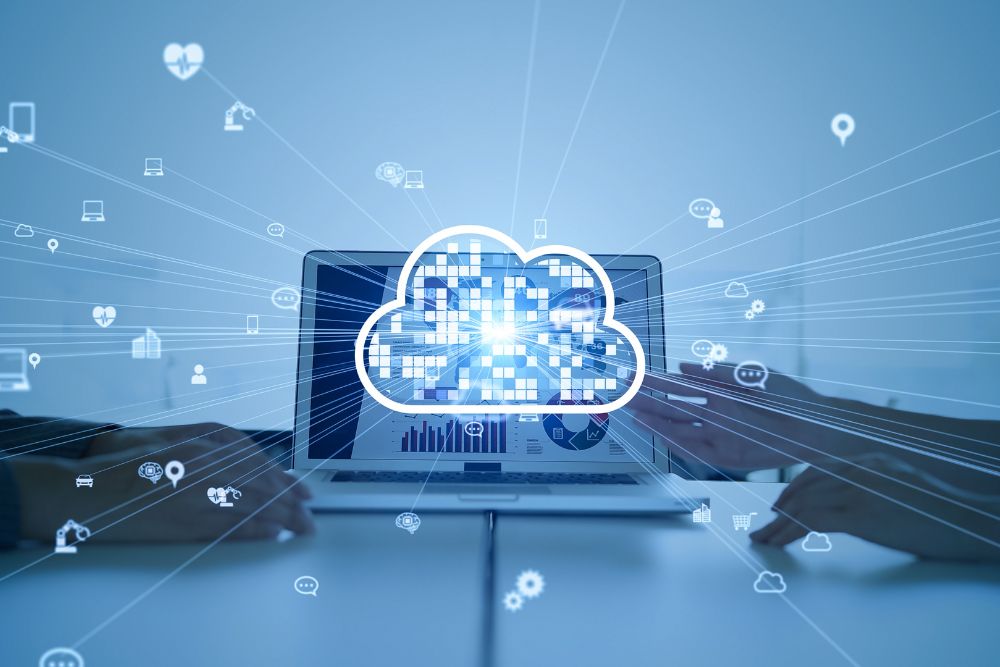Exploring cloud computing in 2025 is much like opening the doors to a newly built city, where designs are unfamiliar and innovations reshape every corner. Organizations worldwide, from India’s vibrant startups to global industry giants, are poised to experience a set of transformations that extend well beyond familiar territory. The advances in cloud are redefining how businesses function, how individuals safeguard and interact with data, and even how global economies compete and cooperate. For anyone curious about the newest wave of technological progress—whether running a digital venture in Bangalore or strategizing in Berlin—understanding the Cloud Computing Trends 2025 is essential for staying prepared and competitive.
Below, you’ll discover five developments set to become the cornerstones of cloud computing as the year unfolds. Each is outlined through a unique lens, purposely stripped of tired jargon, and supported with scenarios and insights you’ll be hard-pressed to find anywhere else.
5 Revolutionary Cloud Computing Trends Transforming 2025
1. The Rise of Environment-Conscious Cloud Operations

Looking only a few years back, cloud service debates centered mostly on price or speed. Now, environmental responsibility is front and center. In 2025, cloud computing is tightly interwoven with concerns about power consumption and ecological impact.
Service providers are compelled by new regulations and market expectations to report real-time energy use and emissions. Indian cloud data centers situated in Pune, Hyderabad, and Chennai are experimenting with solar arrays and advanced cooling technologies that adjust minute by minute to changing capacity demands—an approach mirrored by large providers abroad as well. Some businesses select cloud platforms solely on their sustainability transparency, sometimes giving preference to those using peer-reviewed ecological scores. For developers, the challenge is to design applications that not only scale smoothly but also achieve resource efficiency, lowering invisible waste across millions of computations.
2. Secure AI-Driven Decision-Making As Standard

Conversations about Artificial Intelligence once focused purely on performance marvels. Today, ethical standards, security, and explainability are inseparable from the technology’s expansion. Enterprises integrating cloud-based AI services in 2025 have access to transparent governance layers—every machine-made recommendation or action can be traced and scrutinized for fairness and security.
Consider a healthcare data startup in Delhi, operating on a public cloud, which deploys diagnostic algorithms. These models are monitored for possible bias; every step can be audited and every model retrained on the spot using privacy-respecting federated learning.
For decision-makers in international headquarters or local IT offices, these advances mean they’re not only benefiting from smarter predictions, but also able to show customers, regulators, and boards how these predictions are made, building trust in a way that was rarely possible just a few years ago.
3. Multi-Cloud Meshes Replacing Single-Provider Models

Once upon a time, businesses picked a single cloud provider and did their best to make it work. By 2025, those days are history. Organizations of all sizes spread their services across multiple cloud operators, creating what might be called a “mesh”—a network of interconnected resources that can adapt instantly to traffic spikes, cost alerts, or regional compliance needs.
This new approach isn’t limited to multinationals. Indian fintech companies, for example, may run sensitive banking workloads in government-approved sovereign clouds while using international providers for artificial intelligence modules, combining the strengths of each.
With the emergence of cloud networking standards, it’s now possible to manage these distributed systems from a single interface, tailoring resource use to suit not only each application, but also each country’s legal framework. For engineers and business strategists, the mesh offers peace of mind—freeing them from worries about being locked into specific services and helping them make technology choices that can adapt to whatever the future brings.
4. Bringing powerful data processing closer to people—whether in crowded cities or remote villages—through edge computing and micro-data centers.

Cloud computing is moving closer to where data is created and acted upon—a shift that’s especially pronounced in India’s sprawling geography. Major technology projects, whether smart agriculture in Punjab or real-time logistics in Gujarat’s ports, require ultra-rapid data processing.
Rather than routing all traffic to distant data hubs, companies deploy miniature cloud facilities—sometimes the size of a refrigerator—inside city neighborhoods or near villages. These micro-units process information at the source, reducing delays and providing uninterrupted services even in the event of network disruptions. This design is reshaping what’s possible with smart devices, real-time video analytics, and time-sensitive industrial controls.
For a global perspective, distributed edge sites in France or Brazil face similar motivations—wherever speed and reliability are at a premium, edge cloud is setting the new standard.
5. Cloud-Native Collaboration That Crosses Borders and Disciplines

As remote and hybrid work become routine, cloud platforms are redefining collaboration itself. The next generation of cloud-based tools empowers not only software engineers or designers, but also teachers, logistics planners, and entrepreneurs in rural and urban settings.
Video production teams in Mumbai can co-edit high-resolution footage in real time with counterparts in Toronto. Healthcare researchers pool complex, privacy-protected data sets across city, state, and country boundaries—sharing new insights and building on one another’s work instantly. These collaborative environments leverage cloud-native security, creative automation, and even AI-powered document translation, making it normal to build, test, and publish projects from nearly anywhere.
This evolution isn’t solely about productivity; it expands whose voices get included in global innovation, breaking down historical silos of expertise and geography.
Cloud computing in 2025 is no mere infrastructure story. It’s a dynamic, collaborative force that’s shaping how problems are solved, how resources are stewarded, and how diverse teams connect and innovate. India’s blend of digital ambition and unique challenges—combined with sweeping shifts in global markets—demands a fresh, holistic approach.
The developments spotlighted above represent just a glimpse into the ongoing reimagining of cloud, each pushing boundaries of what’s possible for businesses, professionals, and communities, both locally and worldwide.
If you are considering how these shifts in cloud computing could transform your own business, projects, operations, or partnerships, our team welcomes the chance to explore possibilities with you. Write to us anytime at contactus@panalinks.com and let’s turn today’s new cloud frontiers into real-world results for your business or organization.

